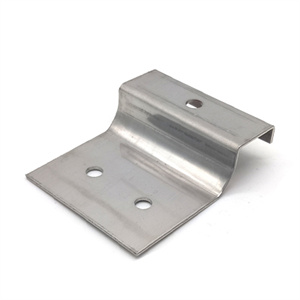The blackening of Flat Springs is an important surface treatment process with a number of significant advantages. The blackening treatment mainly improves the flat spring in the following aspects:
First, enhanced rust and corrosion protection. In the daily use environment, especially in the case of high humidity or chemical corrosion, the untreated spring is easy to rust and corrode, and the black oxide film formed by the blackening treatment can effectively block the intrusion of external factors and extend the service life of the spring. For example, flat springs used in industrial machinery, if not blackened, may deteriorate or even fail due to rust.
Second, blackening improves the appearance quality of the spring. The black surface gives the spring a uniform and clean appearance, making it more beautiful visually, which is important for some products with high requirements for appearance, such as spring components in precision instruments or high-end consumer goods.
In addition, the blackening treatment helps to improve the hardness and wear resistance of the spring surface. This allows the spring to better retain its shape and performance during frequent stretching and rubbing, reducing the risk of wear and deformation. For example, a flat spring in an automotive suspension system is subjected to long periods of vibration and friction, and blackening can enhance the wear resistance of its surface.
Flat Springs does indeed often undergo blackening treatment. This is mainly because blackening treatment can provide a series of advantages for Flat Springs, including:
Improving corrosion resistance: The blackening treatment forms a dense oxide film on the surface of Flat Springs, which can isolate air and water, thereby improving the corrosion resistance of the spring. In humid or corrosive environments, this treatment can significantly extend the service life of flat springs.
Enhanced wear resistance: Flat Springs treated with blackening have a higher surface hardness and stronger wear resistance. This means that the spring is better able to resist wear and maintain its good performance when repeatedly extended or subjected to other mechanical forces.
Improved appearance: The blackened Flat Springs surface presents a uniform and dark appearance, with better decorative and visual effects.
Enhanced stability: This oxide film can reduce the friction coefficient on the surface of Flat Springs, reduce the energy loss of the spring during movement, and thus enhance the stability and reliability of the spring.
It should be noted that the specific effect of blackening treatment will be affected by factors such as processing technology, liquid composition, and processing time. Therefore, when conducting blackening treatment, it is necessary to choose appropriate treatment processes and parameters based on specific product requirements and usage environments.
In addition, although blackening treatment can bring many advantages to Flat Springs, in certain special applications, it may be necessary to combine other surface treatment methods (such as spraying, electroplating, etc.) to achieve better results.
